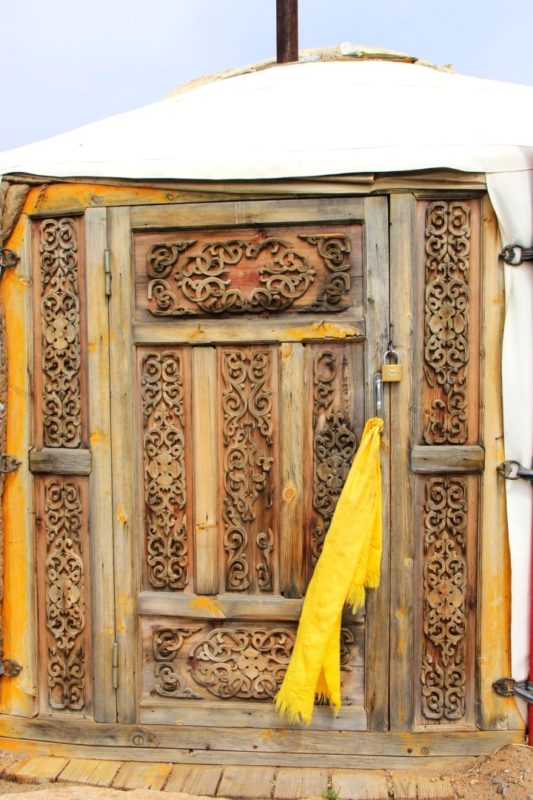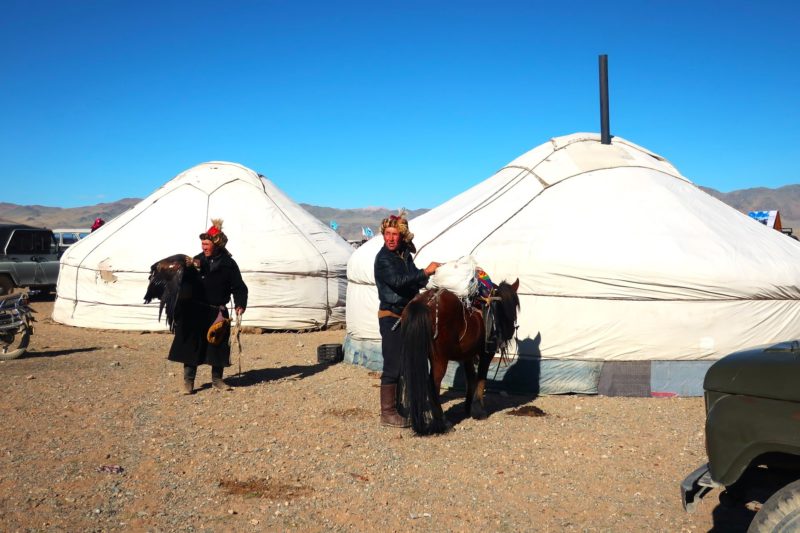
Construction of the Ger
The white round tent, the traditional dwelling of the Mongolian nomads, weighs around 300 kilograms. The yurt, called ger in Mongolian, can be found throughout the country. She usually stands in the middle of the steppe on the grass, rarely on a wooden floor. In Ulan-Bator, too, it is part of the cityscape, as there is a lack of buildings, entire districts consist only of yurts. The construction is simple and sophisticated at the same time, within a few hours a Mongolian ger can be set up or taken down again. Thanks to the thick felt, which is stacked in up to four layers, the ger tent protects against the cold in winter and shields from the heat in summer.
If the white outer cloth is folded up, the air can circulate inside. The walls are made up of four to six scissor lattices that can be pushed together. The roof ring is supported by two wooden beams and several wooden poles. Which are tied to the scissor latticework with leather straps or stuck in the dome, from the roof. The white linen cloth, which is placed over the felt, protects against moisture with a layer of wax. The door of the yurt always faces south. The stove is in the middle, its flue pipe protrudes above the roof ring.
Kazakh Ger
The Kazakhs also live in yurts in the summer, but these differ from those of the Mongolian nomads. They are much larger, the roof is built with longer wooden poles that are tapered so that the roof is higher. These yurts are often decorated inside with the typical Kazakh colorful embroidery or weaving. However, these pointed yurts are much more susceptible to wind than the flat laps of the Mongols. In winter, the Kazakhs therefore often live in paralyzed or stone houses.





